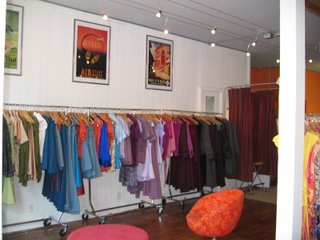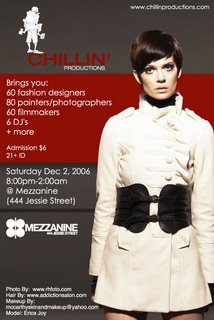
Got up early again to the cold and gloomy morning. It was indeed the coldest day since I came to Japan, but I could still manage with SS polo shirt. As usual, I took a walk around Shinjuku on the way to the train station, where I for the first time hopped on the JR Yamanote Line. This line, other than the Metro Ginza Line, is probably the busiest, the most crowded and the most prominent line in the entire Tokyo metro area. Also known as the green circle line, the Yamanote trains circulate around Tokyo area and pass through major business and entertainment areas like Shibuya, Shinagawa, Tokyo City, Uneo, and Asakusa.

A short ride on Shinagawa-bound train dropped me off at Harujuku. A short walk upon the exit on the right side led me to Meiji Jingu Shrine, a site that is, to my surprise, not packed by tourists. The Meiji Jingu Shrine was built in 1920. It honors the life of Emperor Meiji. Prior to the Meiji Era (1868 - 1912) Japan was a closed nation, but as ruler between 1869 and 1912 Emperor Meiji rekindled lost friendships, fostered overseas relations and in so doing, laid the foundations of modern day Japan.

The gate to the shrine, which captured my immediate attention, is made of cypress wood and is one of the largest in the country. Walk under it and up the long gravel path and the city shrinks a mile away--the surrounding woodland covers 175 acres and is said to contain at least one example of every single tree found in Japan. At the end of the serene path I came to the front of the main shrine buildings. The originals were destroyed in the air raids in 1945 so these reproductions date from only 1958.




The stalls selling religious artifacts also sell leaflets which explain, in English, the procedure for paying respects at a shrine. I made note of the worshippers purifying their hands and mouths with water from the stone basin, and the wooden plaques upon which special intentions and wishes are written. Thousands of visitors have left behind thier prayers on racks. During summer, Meiji Jingu also hosts Shinto wedding ceremonies. A Japanese woman told me that the Meiji Shrine, which carries an air of stolidity and prestige, is a popular, but also very expensive venue.



I approached an old Japanese old who was paying worship and asked him about the proper manner with which to pay respects to the shrine. I could barely follow his words which now I summarize:
How to Pay Respects at Shinto Shrines
1.In appropriate dress (mine were only jeans and polo shirt), I am to proceed along the path through the Torii Gate. At Temizusha (the font for ablutions), I rinse my hands and mouth using water from the stone basin. Take care I should not touch the dipper with your lips directly.
2.Then I proceed to the Main Shrine building. He said if I wish, I can throw some coins into the Offering Box.
3.In front of the Main Shrine, I bow twice.
4.Then I clap my hands twice.
5.Finally, I bow once again.




I stumbled upon little boys and girls wearing splendid kimonos around the shrine. Their parents have brought them, along with generous gifts and sacrifices, in order to receive blessing.These kids probably had no clue why they were there, but their parents, often dressed in traditional kimono and fine suits, made sure they abided by the proper etiquette to pay respect to the shrine in order to receive a blessing, which, entails good health and high marks in school. The ceremonies to solicit blessing take place at the age of 3, 5, and 7.






Not too far from the shrine where the Meji Emperor and Empress are deified do I find this condom store Condomania. It stocks all kinds of condoms here from the most generic
durex and
trojan to things that are out of one's imagination. Small boxes and cartons of condoms--chocolate flavor, fresh fruit flavor, condoms for women, super ultra thin condoms--lined the store that, if you look from a distance, you would mistake it as a cigarette shop. Condoms are exquisitely packaged into decoys of candy bars, moth balls, napkins... The most amazing kind I find is Penis Pasta.


Harajuku first burst onto the scene in 1964 - the Olympic year. With the Olympic gymnasium and village located nearby, the prospect of meeting somebody famous in the street drew people from far and wide. Today, the area includes Takshita Street, Meiji Dori Avenue and Omotesando Dori Avenue.

I found the second-hand store (in Japanese called medieval wear) not necessarily cheaper than the ones selling new apparels. A paperboy's hat at this particular was 2900 Yen, compared to the new one I acquired at Muji for 2000 Yen. So you would have to look around, compare prices, and not to be too rash in buying things.

Takeshita Dori Street is opposite the Takeshita Dori Exit of Harajuku Station. Here, shops sell a most extraordinary blend of goods reflecting the Japanese notions of "cute", "cool and American" and "rebellious and British". In other words a strange mixture of Hello Kitty, hip-hop and the infamous British punk. As for the shoppers? Well, any form of fancy dress goes.

Being the focal point of Harajuku's teenage culture, Takeshita Dori (Takeshita Street) and its side streets, which are lined by many trendy shops, fashion boutiques, used clothes stores, crepe stands and fast food outlets geared towards the fashion and trend conscious teens.
In order to experience the teenage culture at its most extreme, visit Harajuku on a Sunday, when many young people gather around Harajuku Station and engage in cosplay ("costume play"), dressed up in crazy costumes to resemble anime characters, punk musicians, etc.

I didn't have sightings of people wearing strange costumes or anime characters. But I did have a lot of fun shopping. Many shops offered bargain for hood sweater, t-shirts, and accessories. The Japanese sizes are just perfect fit for me, since in the US there is no equivalent to a Japanese Small. In fact, the Japanese (or Hong Kong) Large would be a Medium in the US. Anyway, here most of the sales people don't speak English so I had to find the sizes and the styles myself and ask for help in Japanese.

Design T-Shirts Store granlph is a hidden jewel in Harajuku. Unlike the overpriced Beams T, which is just several doors up, this place sells limited editions of simple-design t-shirts by up-and-coming local artists. All SS t-shirts are marked for 2625 Yen each and 2 for 4200 Yen. Long-sleeves are 2900 Yen each. The store was crammed with so many people that even I managed to elbow my way in, at first I had a hard time navigating through and looking at the stuffs. When I was ready to check out, the salesperson was punctilious enough to noticed i had picked t-shirts of various sizes. He politely asked if they were gifts and I said
hai, sore wa puresendo o tomodachi desu. Then he carefully wrapped the t-shirts for me and ribboned them very gorgeously. Bidding goodbye to him, he gave me a few postcards and asked me to come visit whenever I'm back in Tokyo.


It was always dark by the time the Yamanote train took me back to Shinjuku. I decided to have
katsu don for dinner so I walked over to the west side of Shinjuku station and looked for a restaurant. I took the elevator up to 5th floor, purchased a ticket for the
katsu don, found a seat by the window that overlooked the neoned streets and scribbled on my journal. The waiter arrived with a pitcher of water (yes, a pitcher for each patron), miso soup, and
edamame.
 Tired of the usual Gap or Banana Republic? Think Abercrombie sucks (so it says on a T-shirt at American Boys on Castro)? Don't want to put up with the outrageous price at Rolo? Try Showroom. Showroom is a fashion studio in the Mission Dolores (hey guys, it's just a short walking distance from the Castro) that features my friend, Estrella's custom-made and vintage reconstruct men's clothing as well as the Rare Thread label by Saffron, and Yugula's dresses.
Tired of the usual Gap or Banana Republic? Think Abercrombie sucks (so it says on a T-shirt at American Boys on Castro)? Don't want to put up with the outrageous price at Rolo? Try Showroom. Showroom is a fashion studio in the Mission Dolores (hey guys, it's just a short walking distance from the Castro) that features my friend, Estrella's custom-made and vintage reconstruct men's clothing as well as the Rare Thread label by Saffron, and Yugula's dresses. So if you ever have time and are in the neighborhood, stop by and take a look at Showroom. The girls there might even treat you to a glass of red.
So if you ever have time and are in the neighborhood, stop by and take a look at Showroom. The girls there might even treat you to a glass of red. Also next weekend, on Saturday, December 2, Chillin' Productions will host a party at Mezzanine that features 60 fashion designers and 80 photographers including the Showroom. Read the flyer for more info.
Also next weekend, on Saturday, December 2, Chillin' Productions will host a party at Mezzanine that features 60 fashion designers and 80 photographers including the Showroom. Read the flyer for more info.





























































